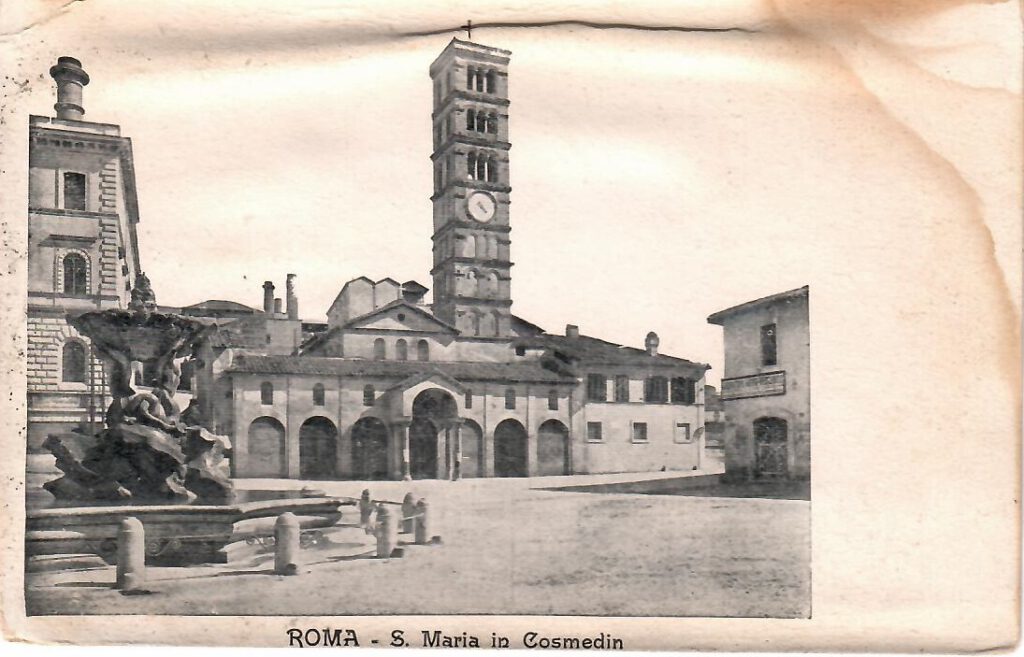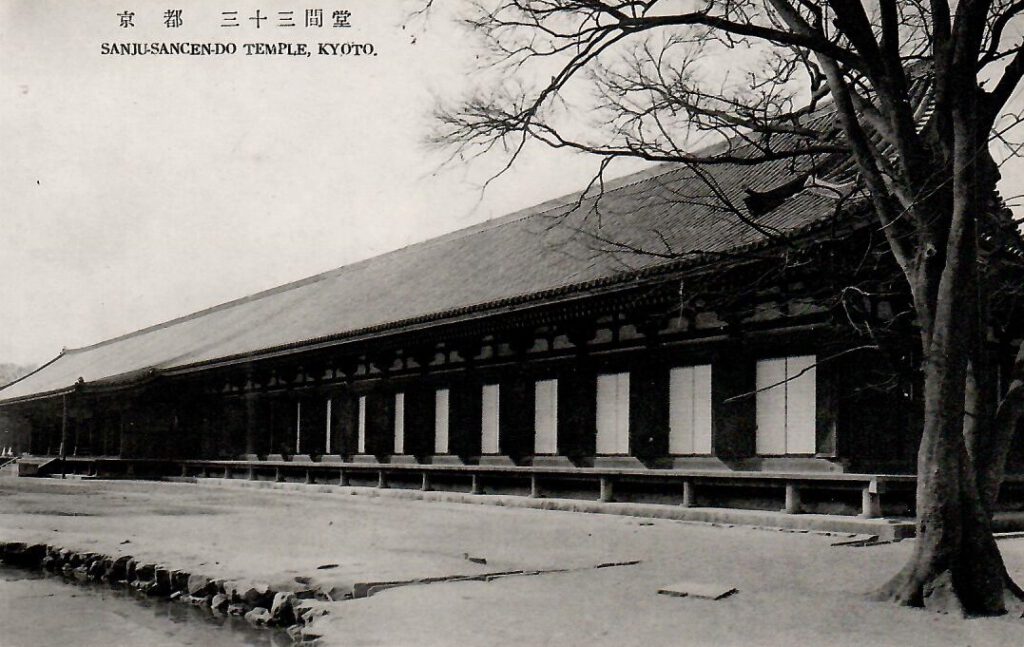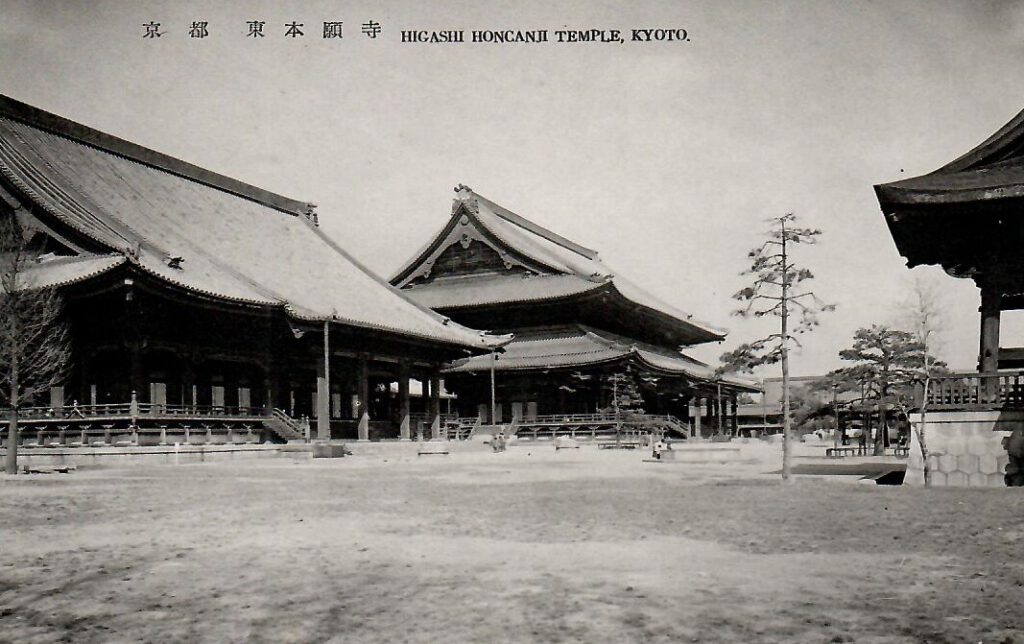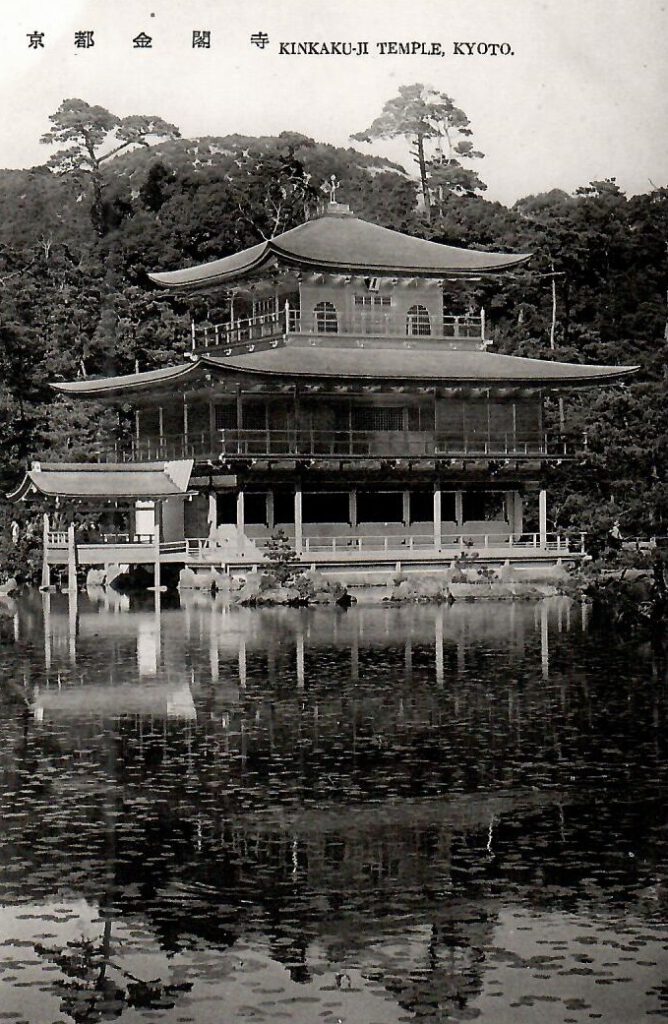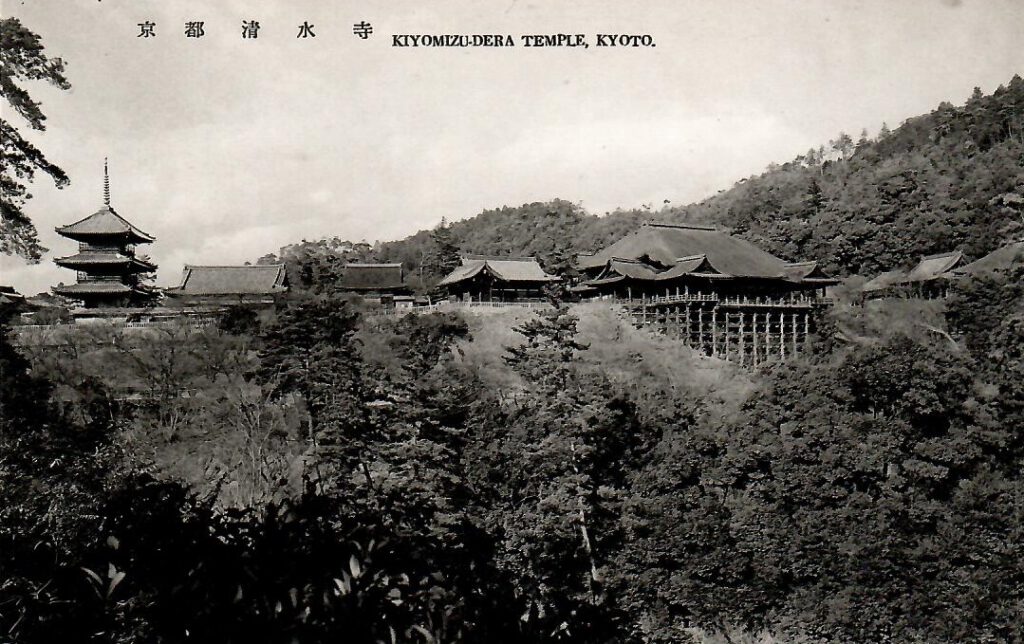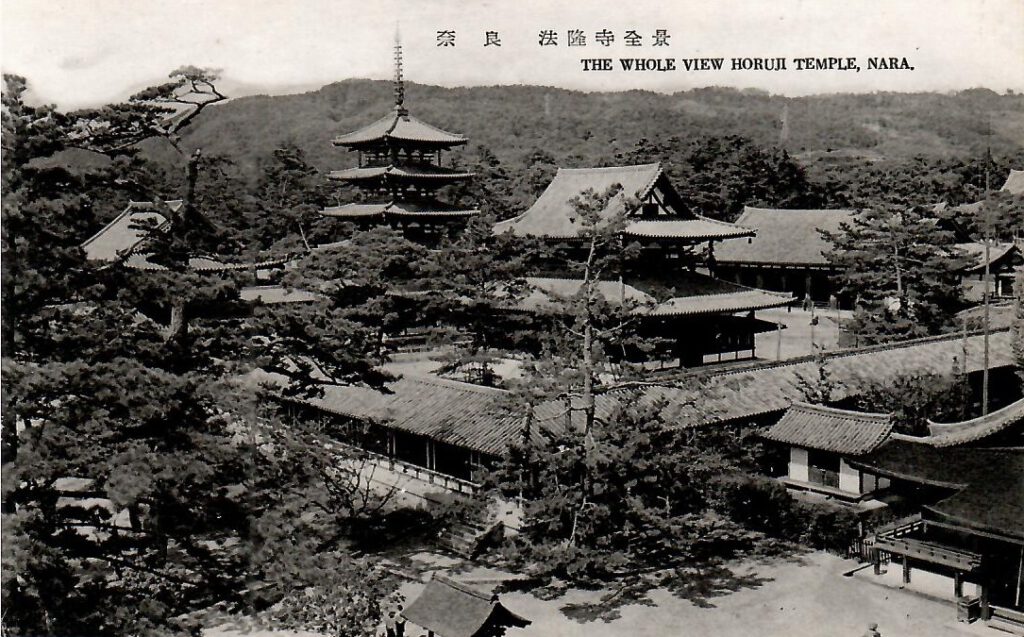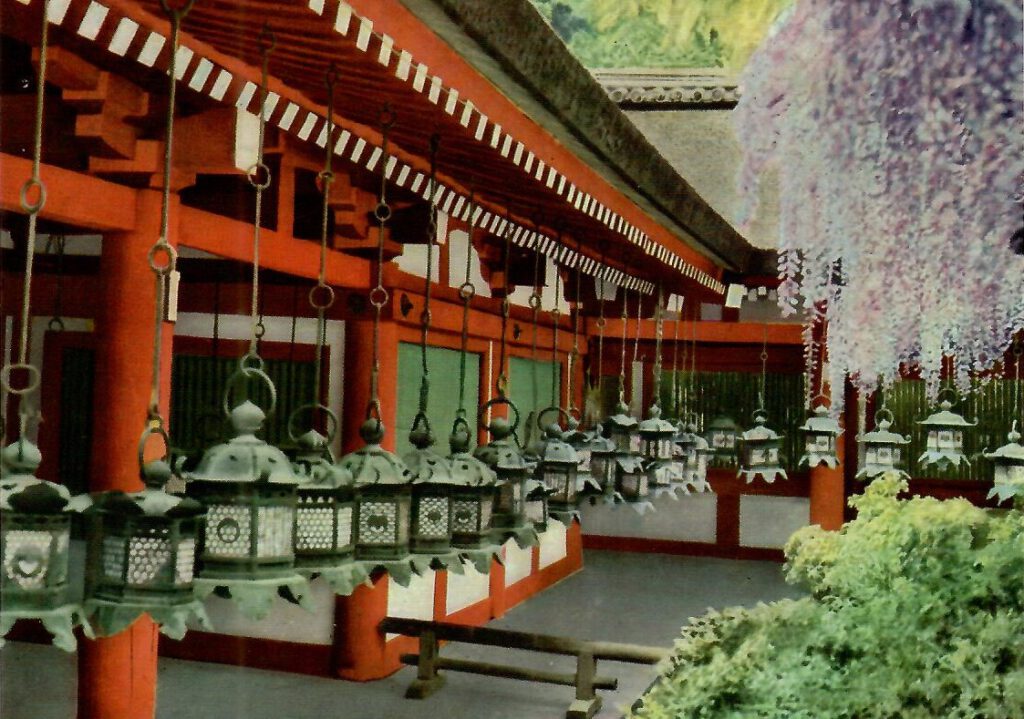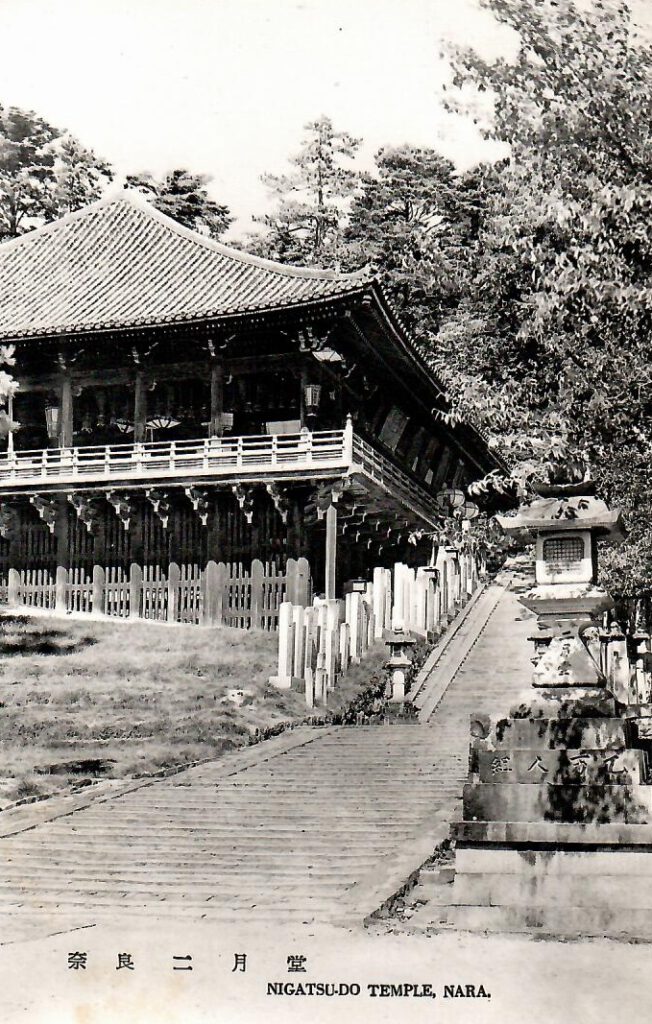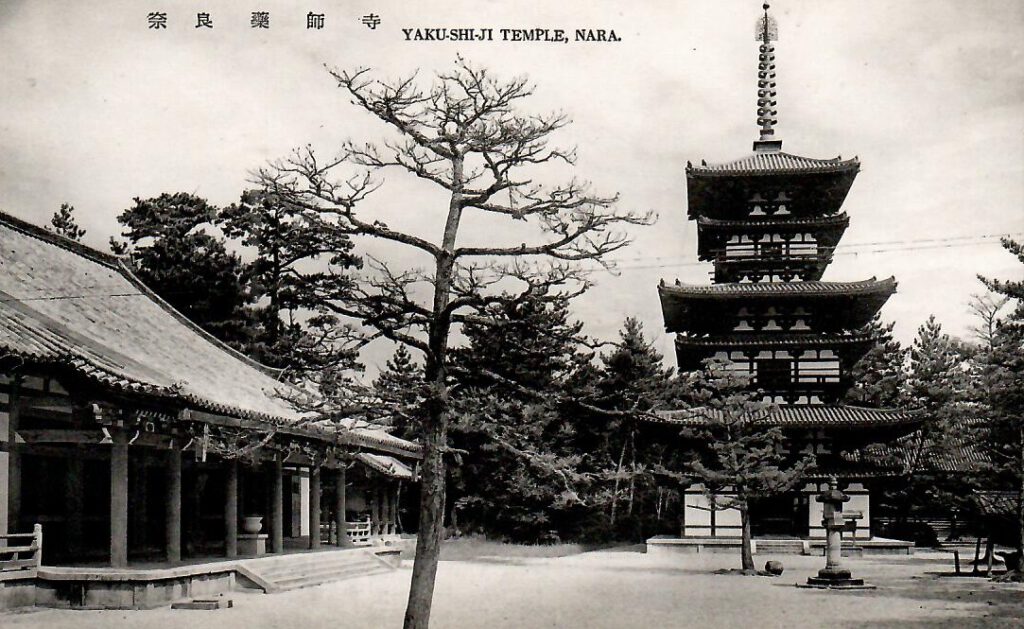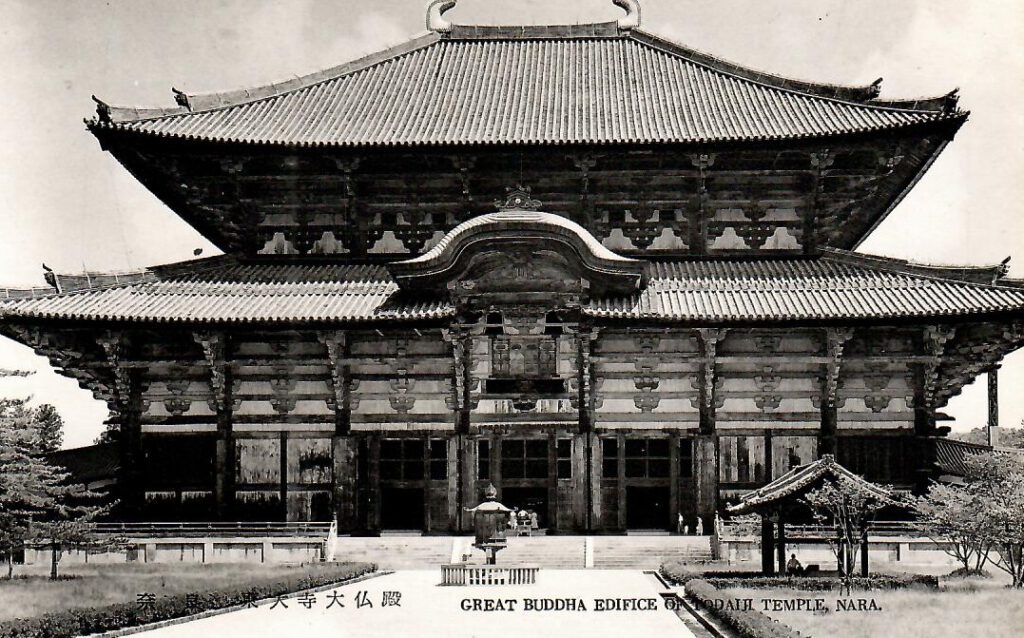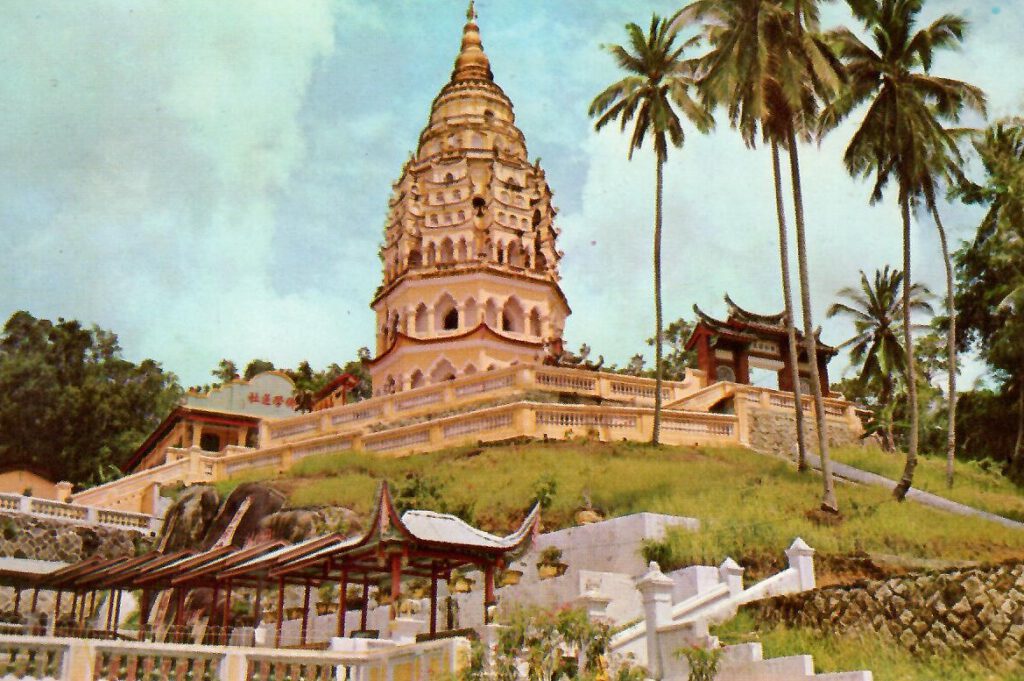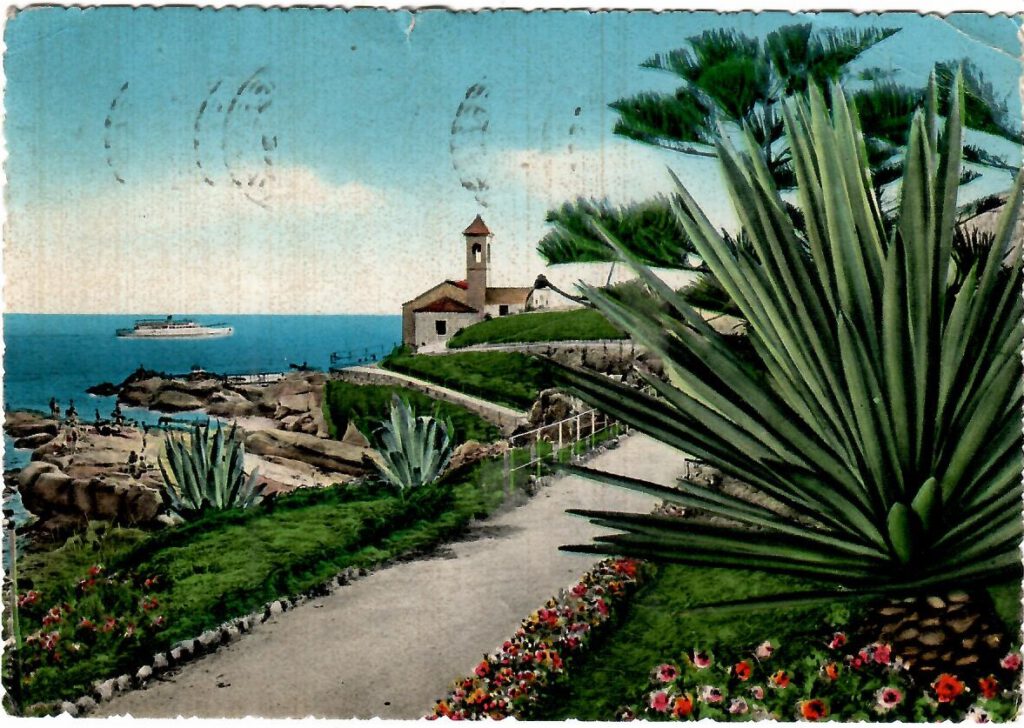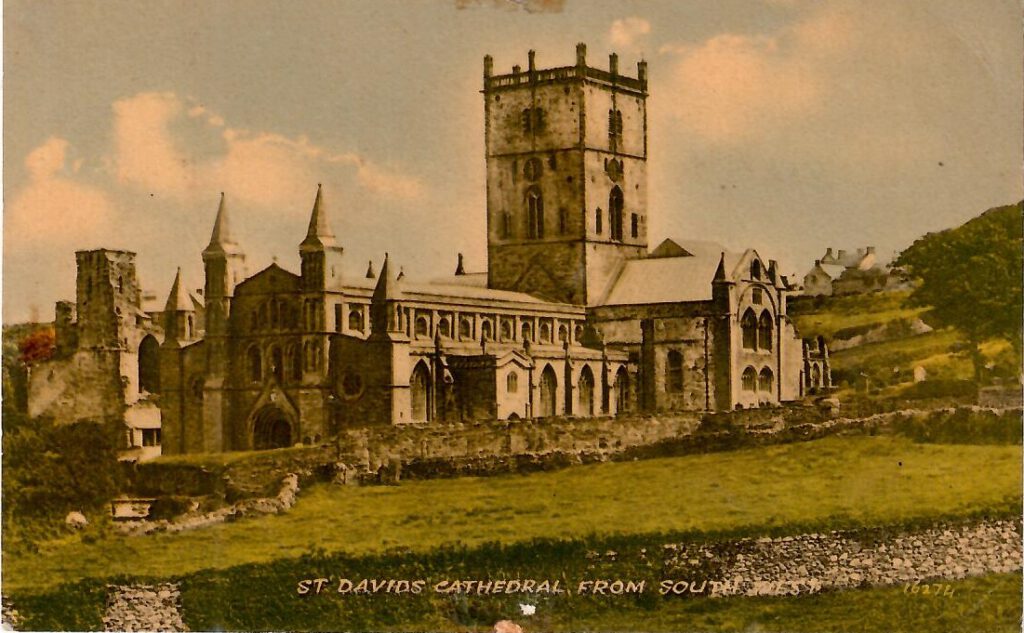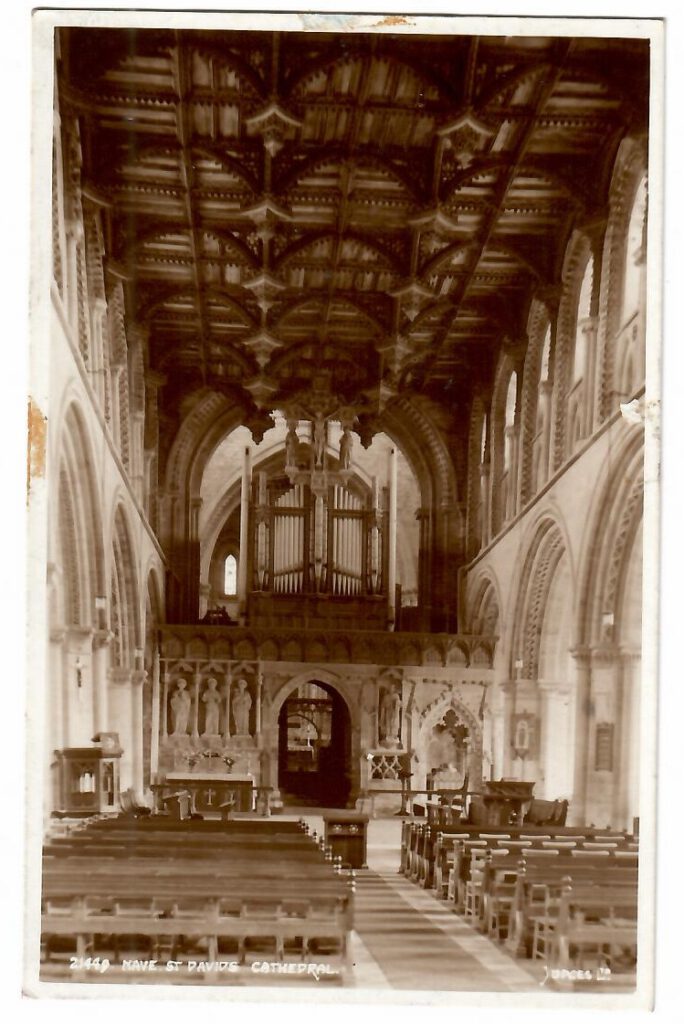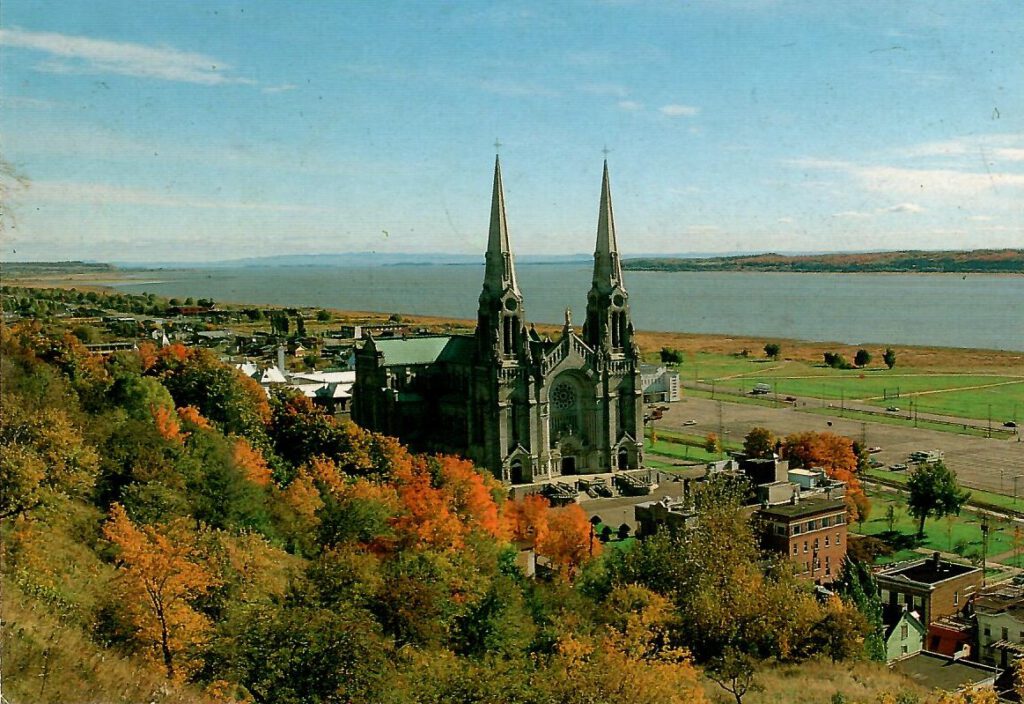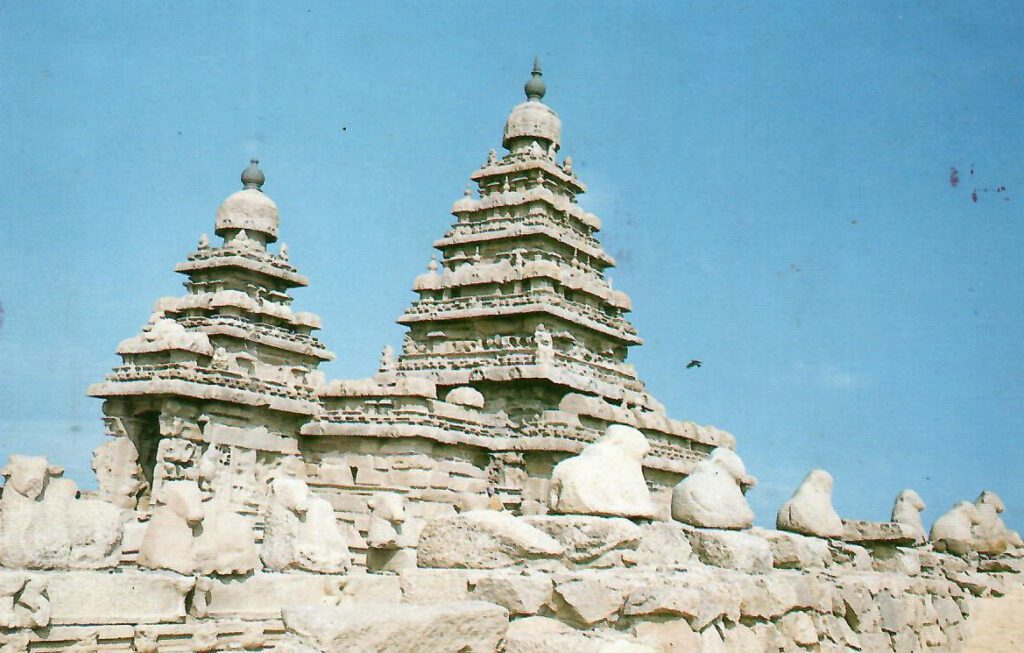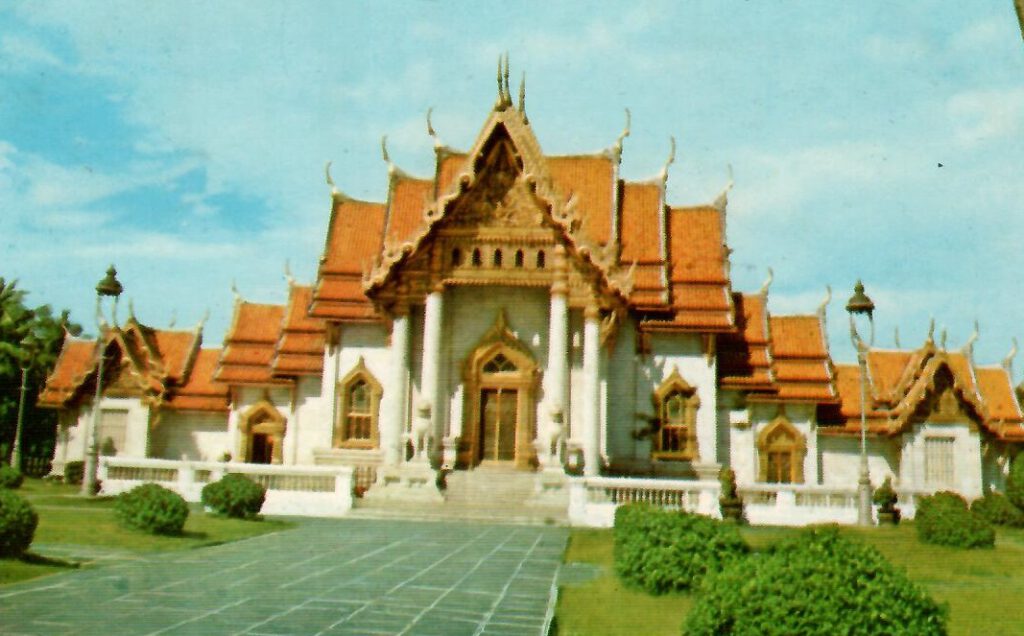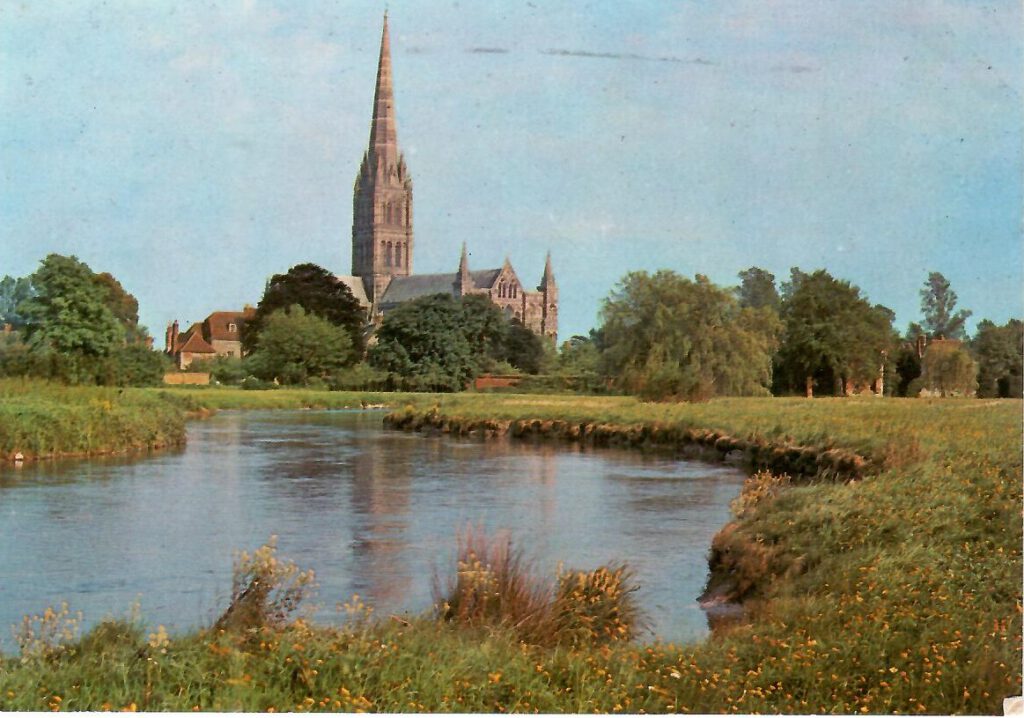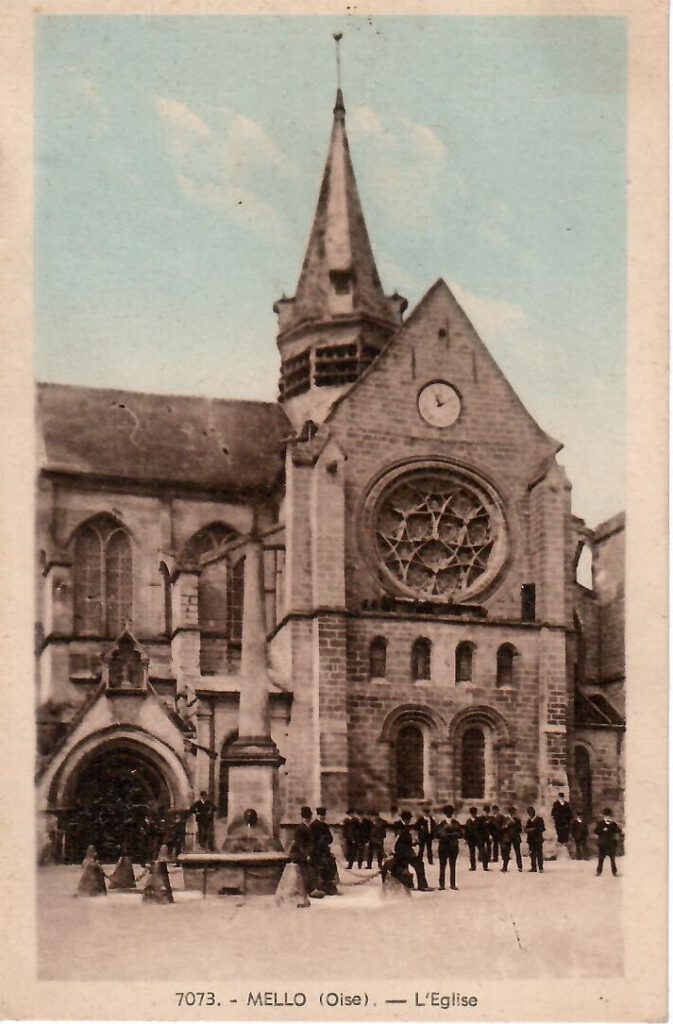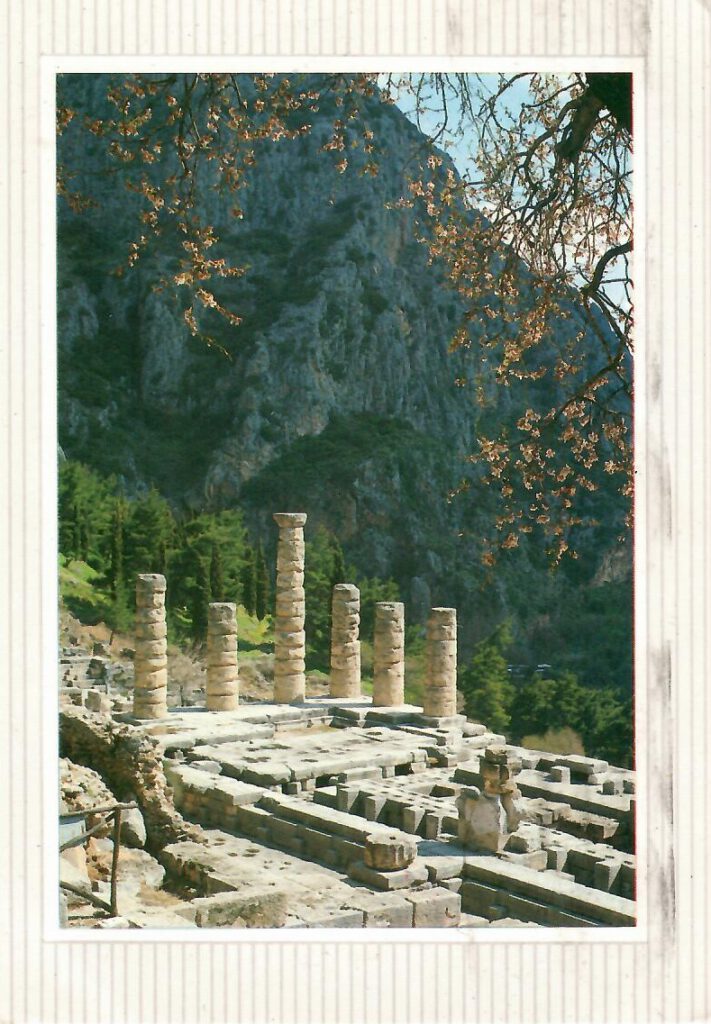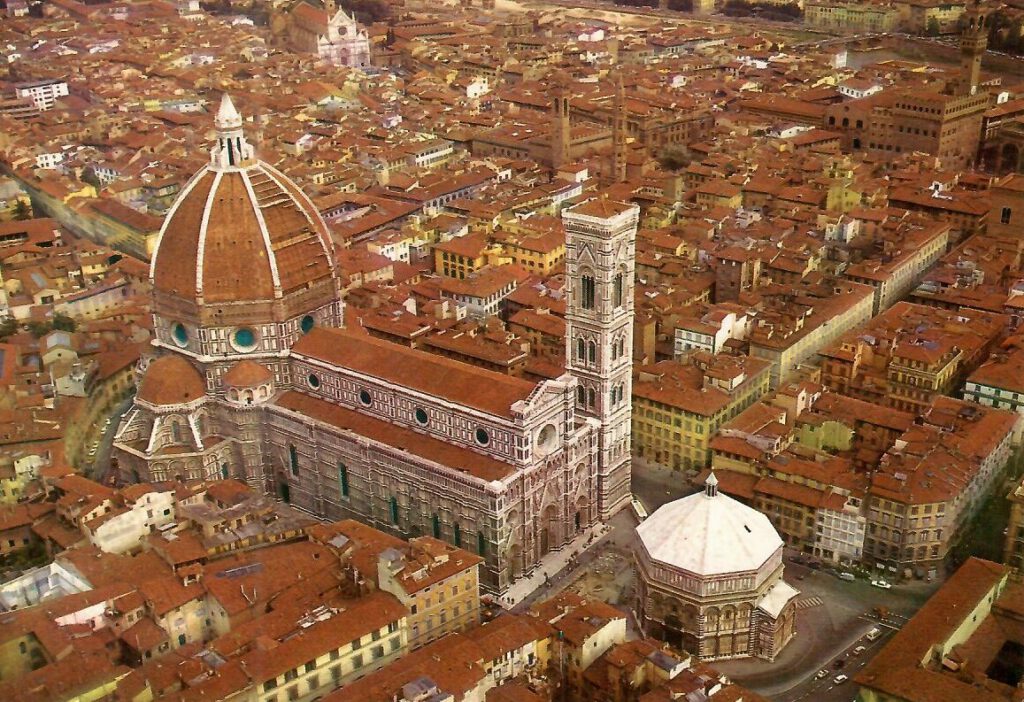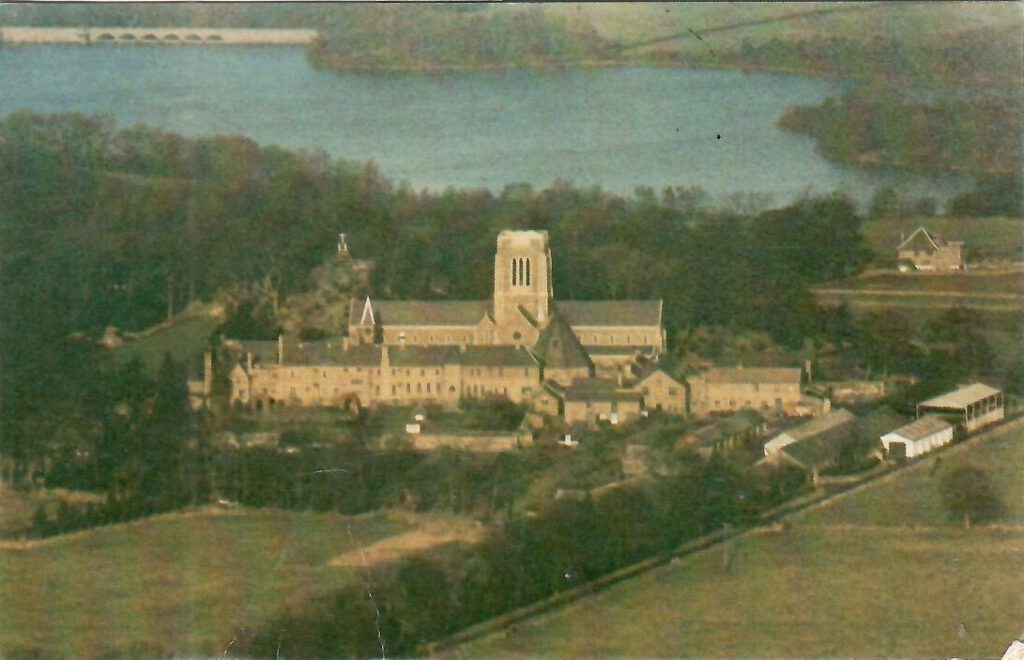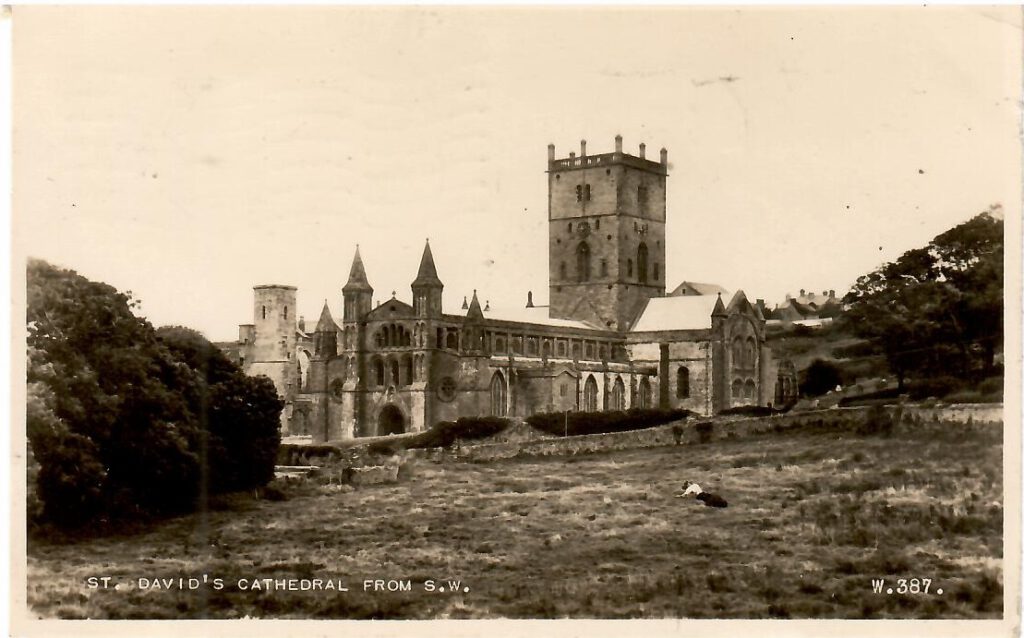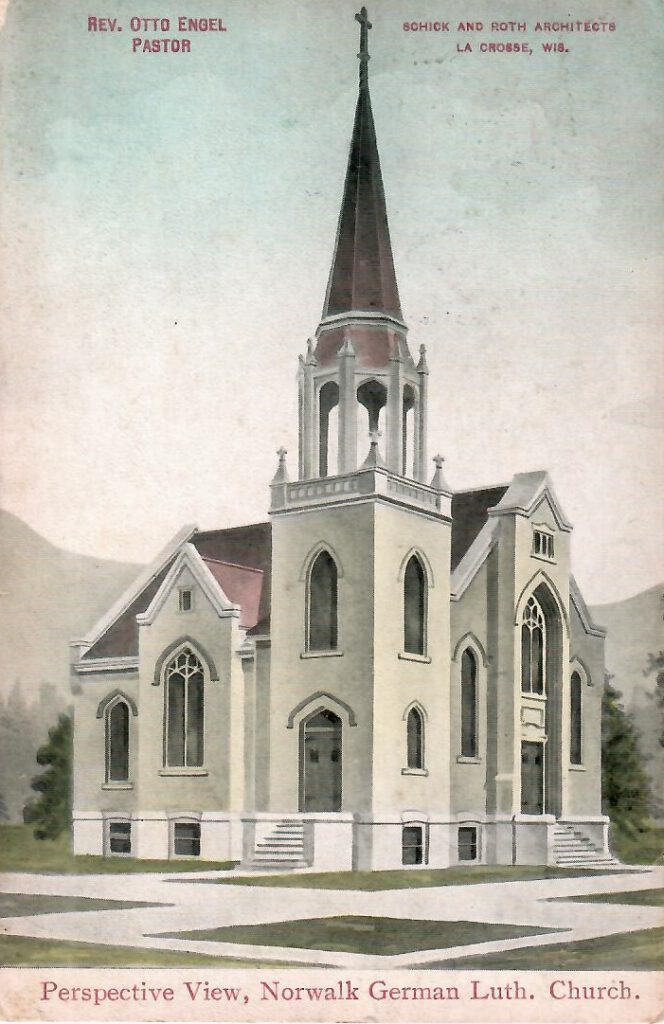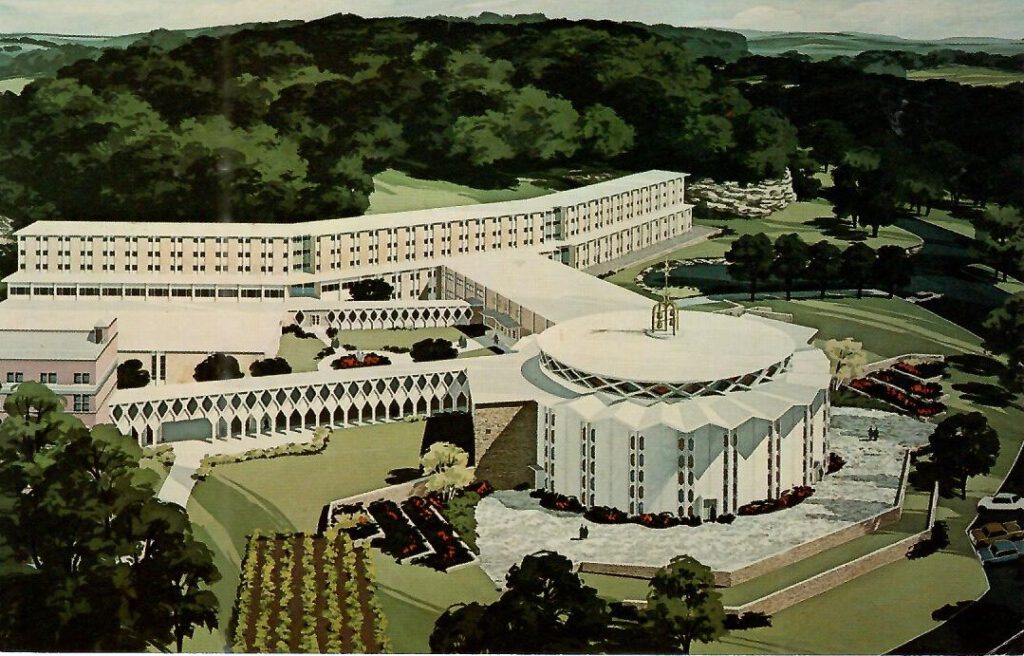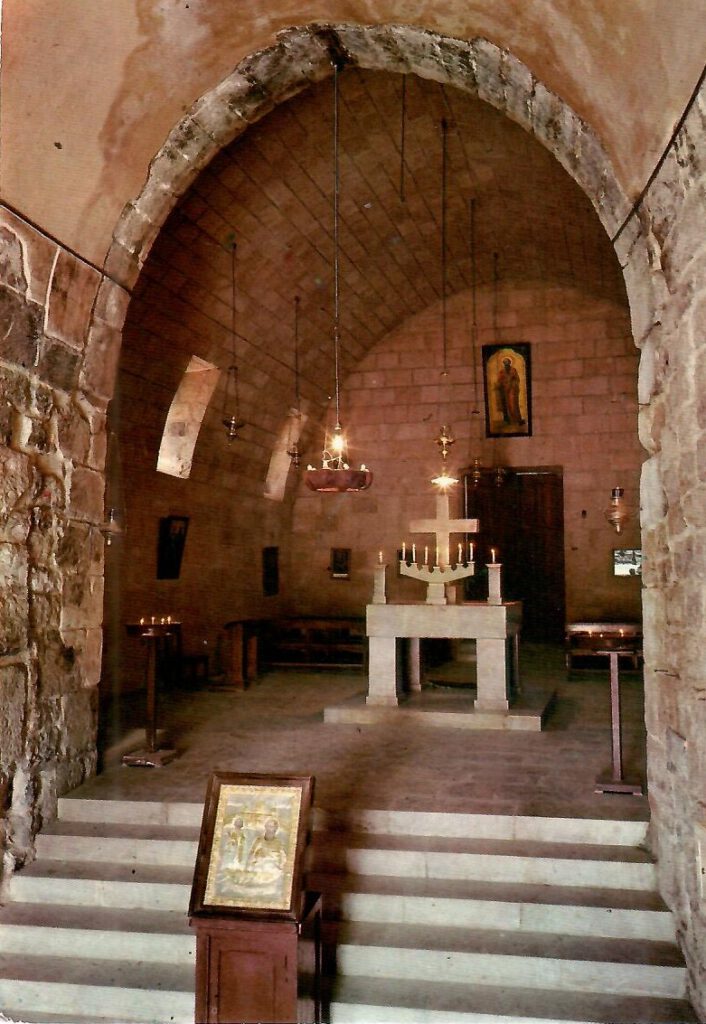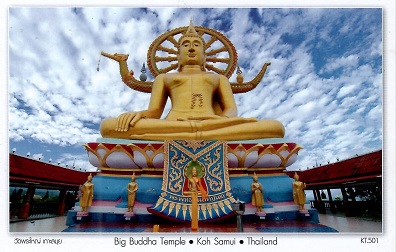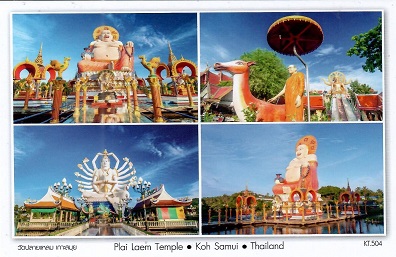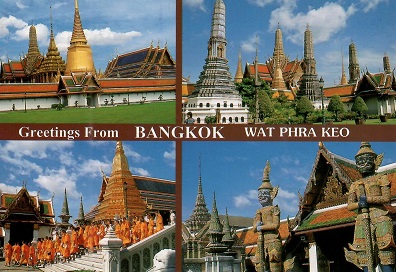-
Roma – S. Maria in Cosmedin (Italy)
Old card, unused and unwritten but in terrible stained and crinkled condition. Grade: 5
-
Siracusa, Cripta di S. Marciano nell’antica Cattedrale di S. Giovanni (Italy)
We could go into another long story, but will give you a rest this time. Unused, aged, vaguely creepy old postcard. Grade: 2
-
Växjö, Biskopsgården Östrabo (Sweden)
Mailed in what looks like the 1970s, with two stamps and indistinct postmark. Grade: 2
-
Kyoto, Sanju-Sancen-do Temple (Japan)
As usual, transliterating Japanese or Chinese characters (or Thai, or anything non-Roman, for that matter) can lead to confusion. Google tells us there’s a different spelling now, and adds even more: “Sanjusangendo (三十三間堂, Sanjūsangendō) is the popular name for Rengeo-in, a temple famous for its 1001 statues of Kannon, the goddess of mercy. The temple was founded in 1164 and rebuilt a century later after the original structure had been destroyed in a fire. Measuring 120 meters, the temple hall is Japan’s longest wooden structure. The name Sanjusangendo (literally “33 intervals”) derives from the number of intervals between the building’s support columns …” Not really too much information, and we were struck by the starkness of this unused old postcard. Grade: 1
-
Kyoto, Higashi Honcanji Temple (Japan)
More minor transliteration issues. Higashi Hongan-ji (東本願寺), or, ″the Eastern Monastery of the Original Vow″, is one of two dominant sub-sects of Shin Buddhism, the other being Nishi Honganji (or, ‘The Western Temple of the Original Vow’). It is also the name of the head temple of the Ōtani-ha branch of Jōdo Shinshū in Kyoto, which was rebuilt in 1895 after a fire burned down the previous temple. As with many sites in Kyoto, these two complexes have more casual names and are known affectionately as Onissan (お西さん, Honorable Mr. West) and Ohigashisan (お東さん, Honorable Mr. East). And, here’s an unused old postcard with Honorable Mr. East. Grade: 1
-
Kyoto, Kinkaku-ji Temple (Japan)
Sometimes a seemingly plain postcard masks an extraordinarily colourful story. We often refer to information from Wikipedia (and why didn’t we have Wikipedia when we were in school?), but almost never direct you to the entire entry as we are doing now: https://en.wikipedia.org/wiki/Kinkaku-ji. We aren’t certain when this unused old B&W postcard was produced — we’re guessing 1960s but don’t know — though the extensive Japanese caption on the reverse might tell you more. Grade: 1
-
Kyoto, Kiyomizu-dera Temple (Japan)
Unused, old B&W postcard. Grade: 1
-
Nara, Five-Storied Tower of Kofukuji Temple (Japan)
As we make our way through listing Japanese temples, we realise they are all important and distinctive in unique ways — except for one: they all seem to have burned down at one time or another. Kōfuku-ji was established in 669 by Kagami-no-Ōkimi (鏡大君), wishing for her husband’s recovery from illness. Its original site was in Yamashina (present-day Kyoto). In 672, the temple was moved to Fujiwara-kyō, the first planned Japanese capital, then in 710, it was dismantled for the second time and moved to its present location, on the east side of the newly constructed capital, Heijō-kyō, today’s Nara. The temple was damaged and destroyed by civil wars and fires many times and was rebuilt as many times as well, although finally some buildings were never reconstructed and are missing today. The rebuilding of the Central Golden Hall was completed in 2018. Now, for the postcard: old, B&W, unused, and Grade: 1
-
Nara, Horuji Temple, The Whole View (Japan)
Hōryū-ji (on the postcard: Horuji) is a Buddhist temple that was once one of the powerful Seven Great Temples, in Ikaruga, Nara Prefecture. Its full name is Hōryū Gakumonji, or Learning Temple of the Flourishing Law, the complex serving as both a seminary and monastery. This unused and quite old B&W postcard has an extensive Japanese caption on the reverse. Grade: 1
-
Nara, Kasuga Shrine, Lanterns (Japan)
Kasuga-taisha is a Shinto shrine of the Fujiwara family, established in 768 CE and rebuilt several times over the centuries. The interior is famous for its many bronze lanterns, as well as the many stone lanterns that lead up the shrine. The old, unused postcard’s English caption recounts some of these details. Grade: 1
-
Nara, Kasuga Shrine (Japan)
Unused B&W postcard. As with others in this series, there’s a significant caption in Japanese on the reverse. Grade: 1
-
Nara, Nigatsu-do Temple (Japan)
On the side of Mount Wakakusa, Nigatsu-do (“The Hall of the Second Month”) overlooks Nara and provides good views of its ancient structures for visitors. Nigatsuo-do’s history is interesting: according to legend, the priest Jicchu saw the Buddhist deity Bosatsu practicing religious training in a waterfall’s cave in eastern Nara in approximately the year 750. Jicchu decided to build the original Nigatsu-do so that this training could be continued in the human world. Jicchu then performed a ceremony to which he invited 13,700 gods. One of the gods, Onyu-myojin, was late to the ceremony. To apologise, he offered scented water from the Onyu River, and the water suddenly sprung up from where the god stood. This event marks the origin of Omizutori, the “Water-Drawing” festival that has taken place annually since the year 752, and at Nigatsu-do since 772. (This is what we mean when we say “We tell the stories.”) Here’s an unused postcard from the mid-20th century. Grade: 1
-
Nara, Yaku-shi-ji Temple (Japan)
Yakushi-ji is one of the most famous imperial and ancient Buddhist temples in Japan, and was once one of the Seven Great Temples of Nanto, located in Nara. The temple is the headquarters of the Hossō school of Japanese Buddhism. So while it might be true for those of us who don’t do our homework, here’s proof that not all temples are Shinto. Unused postcard from mid-20th century. Grade: 1
-
Nara, Great Buddha Edifice of Todaiji Temple (Japan)
Tōdai-ji is a Buddhist temple complex that was once one of the powerful Seven Great Temples, in Nara. Though it was originally founded in the year 738 CE, Tōdai-ji was not opened until the year 752 CE. And when background information is presented like that, it’s easier to understand why our eyes glaze over quickly — meaning no disrespect whatever to the temple itself. Unused old postcard. Grade: 1
-
Tokyo, Meiji Shrine
Unused old card, multi-captioned on the front. Grade: 1
-
Ise-Shima National Park, Toyouke Great Shrine (Gegu) (Japan)
Ise-Shima National Park encompasses most of the Shima Peninsula in Mie Prefecture. The area has an abundance of fish, shellfish and other foods, and was once called Miketsu Kuni, meaning “providers of food to the imperial court.” It still feels like a sacred place and is home to some of Japan’s most ancient and revered Shinto shrines, including this one, the Outer Shrine (外宮), one of two main shrines making up the Ise Shrines. Formally known as the Toyouke Daijingu, the Outer Shrine enshrines Toyouke Omikami, the Shinto deity and guardian of food, housing and clothing. Unused, older B&W card with Japanese caption on the reverse. Grade: 1
-
Penang, Kek Lok Si Chinese Temple (Malaysia)
Sometime mid-century, Malaysian Airlines issued this (unused) card. A prominent airline logo appears on the upper left reverse, and an English caption on the bottom left reverse. Grade: 1
-
Penang, Muslim Mosque (Malaysia)
Our name for this card is what the card’s own caption says, to which we ask: is there any other kind of mosque? Mailed in 1961 with local “Penang” state stamp of Malaya, and full postmark. It’s A.S.M.K. & Co. postcard P-331, and Grade: 1
-
Nara, Toshodaiji Temple (Japan)
One of the downsides of placing a black caption on a black background is that it’s hard to read. This is, again, an old and unused card. We can make out “To-shodai … Temple, Nara” and that should be enough proof but if we’re wrong, please let us know. Meanwhile, we know that (唐招提寺, Tōshōdaiji) was founded in the year 759 by Ganjin, a Chinese priest who was invited to Japan by the emperor in order to train priests and improve Japanese Buddhism. Ganjin’s influence was monumental, and his teaching at Toshodaiji (which roughly translates to “temple of the one invited from Tang China”) was important in that process. Toshodaiji’s main hall (kondo) re-opened in late 2009 after being renovated over almost ten years, during which the building was dismantled and reconstructed. The temple’s lecture hall (kodo) was originally an administrative building located in the Nara Imperial Palace and was later moved to Toshodaiji. Today, it is the only surviving building of the former palace. So what yu see in the postcard has a slightly different view than it might look now. Some smudging on the reverse, not serious. Grade: 2
-
Milano, Duomo (Italy)
Real-photo card mailed in the 1950s with stamp and postmark. Minor creasing not too visible. Grade: 2
-
Bordighera, Cliff and S. Ampelio Church (Italy)
This card with serrated edges was mailed with great anticipation, the stamp, and the postmark, in 1959. We hope they had exactly what they wanted. There’s postmark ink transfer on the front. Grade: 2
-
Kylemore Abbey, Connemara, Co. Galway (Rep. of Ireland)
Though the original castle was built as late as 1868, Kylemore Abbey was founded in 1920 as a Benedictine Monastery on the same grounds, for Benedictine nuns who fled Belgium in World War 1. Today it continues its mission and also operates as one of Ireland’s leading visitor attractions. Unused older card. Grade: 1
-
St. Davids Cathedral from South West (Wales)
Mailed in the 1950s with 3d stamp and partly readable postmark. It’s Valentine’s card 16274. Grade: 1
-
Christchurch, The River and Priory (England)
Mailed in 1954, with postmark and two 1d stamps, this is Sun Ray card #CM.344. Grade: 1
-
St. Davids Cathedral, Nave (Wales)
Judges’ Ltd. card 21449, mailed in 1959 with 3d stamp and clear postmark. Grade: 1
-
Sainte-Anne-de-Beaupre (PQ) (Canada)
The Basilica of Sainte-Anne-de-Beaupré is a Roman Catholic place of pilgrimage and has a copy of Michelangelo’s statue, the Pietà. The basilica is known as a place of miracles: one of the builders of the original church, Louis Guimont, helped build the church despite having severe scoliosis and when the church was complete, he could walk independently. Subsequent visitors have left their canes and crutches behind, and the main wall at the entry into the basilica is completely covered with crutches. None, however, to be seen in this card, mailed in 1989 with a 76-cent stamp and faint postmark. Grade: 1
-
Madras, Mahabalipuram Shore Temple (India)
Let’s make this crystal clear up front: the postcard was published by Malaysian Airline System (MAS), with their logo, and was mailed using a postage meter from Subang Airport in Kuala Lumpur in 1984. It has never seen India. But like many other airlines, MAS featured its major destinations on postcards, and this was no exception. Grade: 1
-
Bangkok, Wat Benchama Bopitr
Also called “The Marble Temple” and victim to the same variety of spellings that plagues other Thai transliterations. Mailed many years ago with four overlapping stamps and two mostly unreadable postmarks, it’s an iconic Thai postcard nevertheless. Grade: 1
-
Salisbury Cathedral and River Avon (England)
J. Arthur Dixon card L6/PWI 80930/Wiltshire, mailed in 1987 with an 18p stamp and full postmark. Grade: 1
-
Mello (Oise) – L’Eglise (France)
Unused, old “local” card. Grade: 1
-
Delphi, Apollo’s Temple (Greece)
Mailed in 1990, the card has two different stamps and a faint postmark. Grade: 1
-
Firenze, Aerial view of the Cathedral (Italy)
Mailed in 1986, with two stamps, two partial postmarks, and one bilingual Per Via Aerea label. Grade: 1
-
Mount Saint Bernard Abbey, Viewed from South (England)
This property has a colourful background. Mount St Bernard Abbey is a Roman Catholic, Trappist monastery near Coalville, Leicestershire, and founded in 1835 — the first permanent monastery to be founded in England since the Reformation and the sole Trappist house in England. The monks brew the only Trappist beer in Britain. The Wikipedia entry for this is amazingly rich. And the card? Mailed in 1989 with a sort of psychedelic 19p commemorative, airmail label, and postmark over those. Thus sayeth GPS. Grade: 1
-
St. David’s Cathedral from S.W. (Wales)
Cards of that era seem to write “Davids” and “David’s” interchangeably, as does modern-day Google. We do what the postcard tells us to do, in this case with the ‘. Valentine’s real-photo card W.387. mailed in 1958 with stamp and postmark. Grade: 1
-
Norwalk German Lutheran Church (Wisconsin, USA)
Clearly not *just* a church, and a routine Google search has more blindsides than a Survivor Tribal Council. Here’s a condensed excerpt from the Waymarking website: “This church is identified on searches as St Jacob. The signs say St John. When WWI came to America, the government expected full cooperation for the war effort and all things non German. This caused a serious problem the Wisconsin Synod Lutheran church as they were of German background. The church itself refused to preach with support for the war effort … This caught the ire of both patriotic Americans and the government. One such target was Rev Otto Engel, who was the pastor at St Jacob. Rev Engel formed the American Liberty League (and) ultimately (he) was targeted by the Justice Department. He soon became the most detailed and intrusive target of the entire Wisconsin Synod. The Department of Justice went after Rev Engel so fiercely that they interrogated children, raided his house three times after he left Norwalk, and tried many times to trap (him) into being guilty of the Espionage Act. In the end Rev Engel was not indicted and ended up going to Poland to start a new church for war torn Germans there. The building itself is still in amazing condition. It has the year AD 1900 embossed at its base and is very well maintained.” We tell you all this because, first, it’s interesting; second, the card has Rev. Engel’s name; and third, the card almost steers you to La Crosse as the location, which it’s not — not to mention the different name of the church itself. Martha could not have known all this when she mailed the card to Emma in 1910, with stamp and postmark. Grade: 1
-
Sinsinawa, St. Clara College, Dominican Motherhouse (Wisconsin, USA)
Google uncovers several iterations and name changes associated with this massive complex, and we’re not going to try to sort it all out. But the card is easy to describe: from Fagan (17657), unused, Grade: 1
-
Damascus, St. Paul’s Chapel (Syria)
Mailed in 1967, but from Jordan and not from Syria. The stamp and partial postmark are there, along with the address on a label. Grade: 4
-
Koh Samui, Big Buddha Temple (Thailand)
Unused Maekmai card KT.501, and we have two of these. Grades: 1
-
Koh Samui, Plai Laem Temple (Thailand)
Unused Maekmai card KT.504. Grade: 1
-
Greetings from Bangkok, Wat Phra Keo (Thailand)
Westerners find it both amusing and sometimes inconvenient that the Thai language cannot be transliterated exactly into “western” alphabets. This unused card is a perfect example. Yes, it’s the Temple of the Emerald Buddha — no problem there. But on the front it’s spelled as “Wat Phra Keo” and on the reverse it’s “Wat Phra Keaw”. Just a little oddity on a classic Bangkok postcard. Grade: 1

